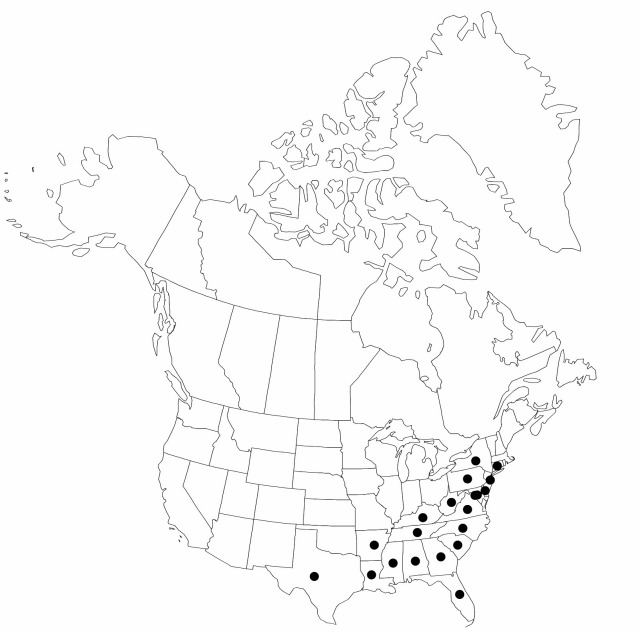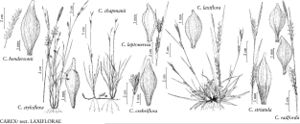Difference between revisions of "Carex striatula"
Fl. Bor.-Amer. 2: 173. 1803.
FNA>Volume Importer |
imported>Volume Importer |
||
| (2 intermediate revisions by 2 users not shown) | |||
| Line 6: | Line 6: | ||
|place=2: 173. 1803 | |place=2: 173. 1803 | ||
|year=1803 | |year=1803 | ||
| + | }} | ||
| + | |special_status={{Treatment/ID/Special_status | ||
| + | |code=F | ||
| + | |label=Illustrated | ||
| + | }}{{Treatment/ID/Special_status | ||
| + | |code=E | ||
| + | |label=Endemic | ||
}} | }} | ||
|basionyms= | |basionyms= | ||
| Line 44: | Line 51: | ||
|publication title=Fl. Bor.-Amer. | |publication title=Fl. Bor.-Amer. | ||
|publication year=1803 | |publication year=1803 | ||
| − | |special status= | + | |special status=Illustrated;Endemic |
| − | |source xml=https:// | + | |source xml=https://bitbucket.org/aafc-mbb/fna-data-curation/src/2e0870ddd59836b60bcf96646a41e87ea5a5943a/coarse_grained_fna_xml/V23/V23_799.xml |
|genus=Carex | |genus=Carex | ||
|section=Carex sect. Laxiflorae | |section=Carex sect. Laxiflorae | ||
Latest revision as of 20:43, 5 November 2020
Culms densely tufted, central or lateral, ascending or slightly decumbent, 45–62 cm × 0.5–1 mm. Leaves: basal sheaths tan or light brown; sheaths green, sometimes glaucous, 4–88 mm; blades green, sometimes glaucous, midrib and 2 lateral veins developed, flat or slightly corrugate, 30–46 cm × 3–14 mm, blades of overwintering leaves smooth or, rarely, sparsely papillose abaxially. Inflorescences: peduncles of proximal spikes 0–5 cm, arising from proximal 1/3 of culms, 1.4–3.3(–5.3) times as long as spikes they subtend; of terminal spikes 0.4–12 cm. Bracts 0.6–14 cm × 0.8–6 mm, bract blades of distal lateral spikes linear, narrower than spikes, widest bract blade of distalmost lateral spike 0.5–3.4 mm wide. Spikes 3(–4) per culm; lateral spikes 22–62 × 3–5 mm; distal lateral spikes separate; terminal spike linear to linear-clavate, 22–32(–36) × 2–3 mm. Pistillate scales 3.4–5 × 1.2–2.2 mm, apex aristate, apiculate, or acute. Staminate scales oblong-ovate, 3–5 × 1.2–2 mm, margins hyaline or, occasionally, light brown, apex obtuse or acute. Anthers 3–3.2 mm. Perigynia 6–18 per spike, scattered to loosely overlapping, ratio of longer lateral spike length to perigynia number 1.9–3.4, ascending, finely, conspicuously (22–)25–32-veined, elongate, (3.4–)3.9–5.1 × 1.2–2 mm; beak straight or slightly curved, 0.6–1.7 mm. Achenes elongate-obovoid, 2.2–2.8(–4.6) × 1–1.8 mm. 2n = 36, 40.
Phenology: Fruiting spring.
Habitat: Dry to moist ravine slopes, deciduous or mixed deciduous-evergreen forests
Elevation: 0–600 m
Distribution

Ala., Ark., Conn., Del., D.C., Fla., Ga., Ky., La., Md., Miss., N.J., N.Y., N.C., Pa., S.C., Tenn., Tex., Va., W.Va.
Discussion
Selected References
None.
